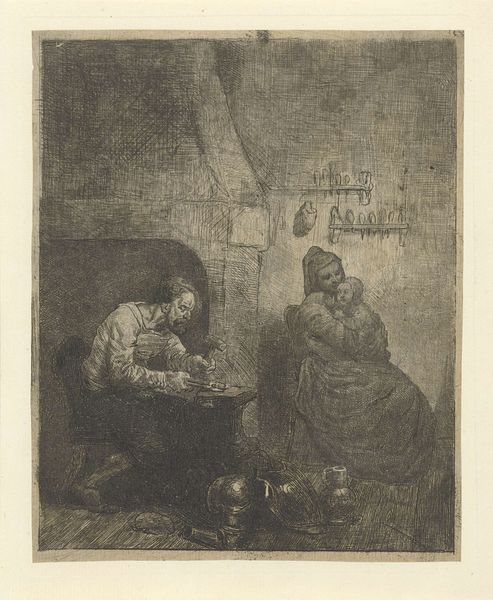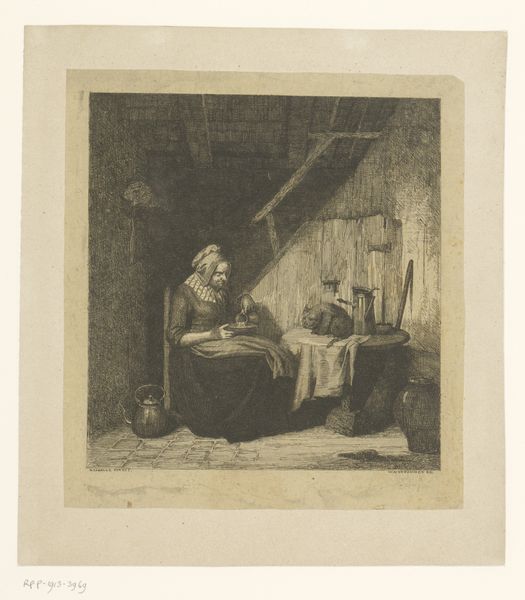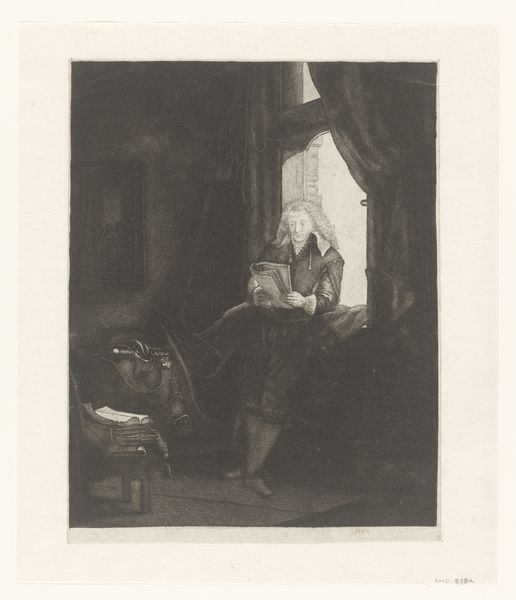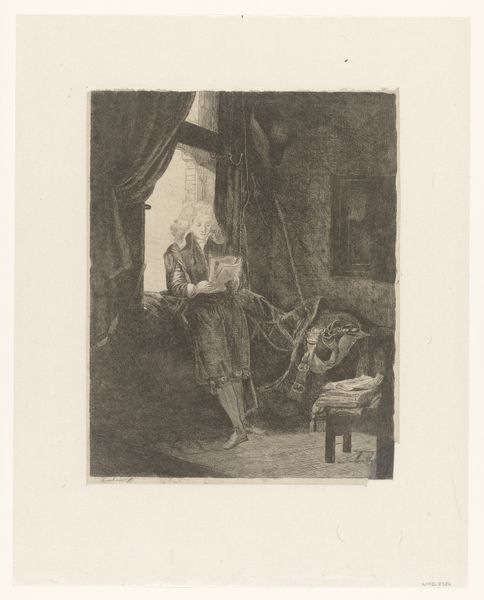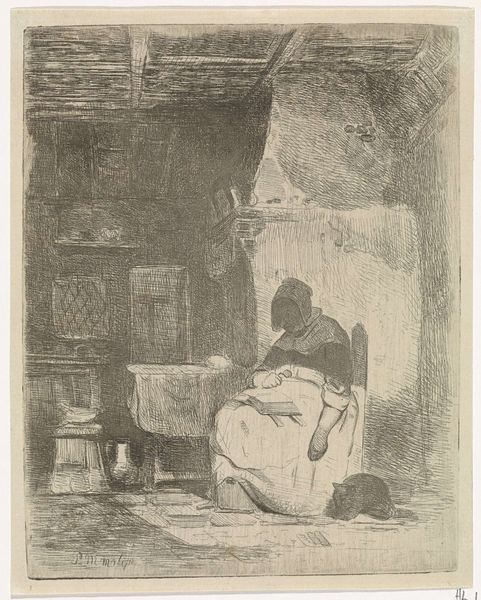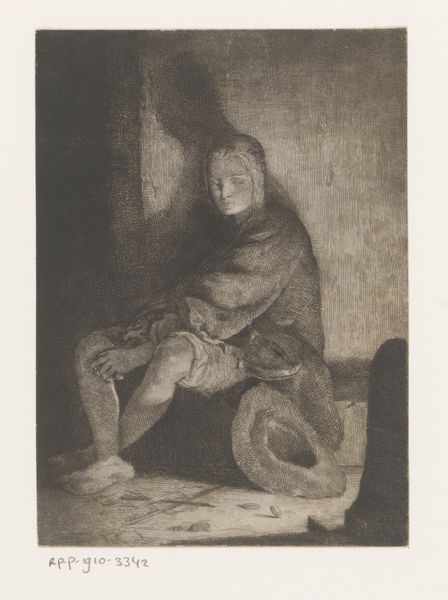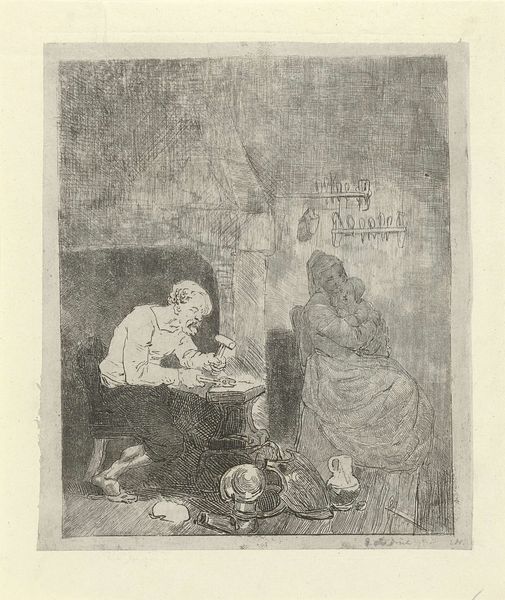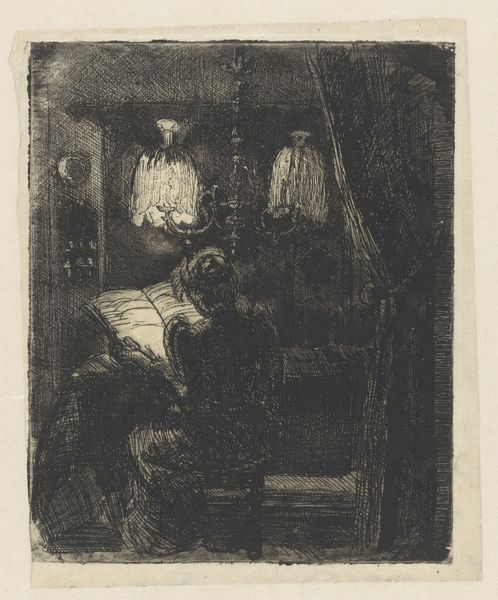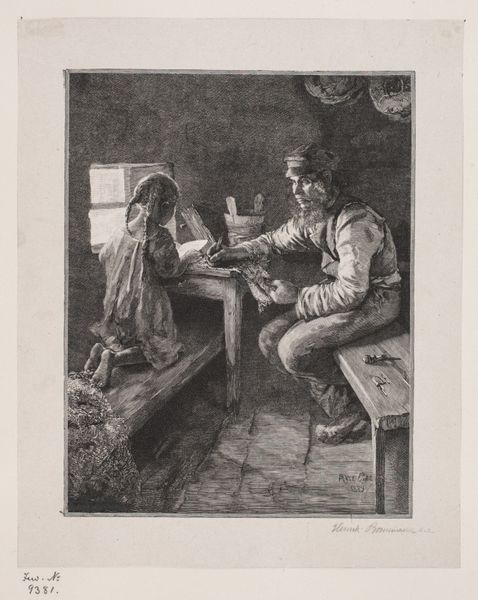
Dimensions: height 165 mm, width 140 mm
Copyright: Rijks Museum: Open Domain
Editor: We’re looking at “Schrijvende man in het schijnsel van een lamp,” or “Man writing by lamplight,” an engraving by Jean-Baptiste Pierre Lebrun, made in 1790. It’s quite atmospheric; the light feels so deliberate. What’s your interpretation? Curator: Considering Lebrun's place in the art world, both as an artist and art dealer deeply enmeshed with the pre-Revolutionary aristocracy and later with the burgeoning Republic, I wonder how the piece participates in a visual culture grappling with shifts in power. The man writing, illuminated, evokes Enlightenment ideals of knowledge and reason. Editor: That’s a good point. He looks scholarly. Is the lamplight a symbol? Curator: Perhaps. Lamplight becomes significant when literacy is valued as a social project. What stories did engravings like this help to construct and circulate about labor, about access to education? These images were tools, subtly reinforcing societal structures or quietly proposing new ones. Who was buying prints like this? What kind of message were they expecting to receive? Editor: So you're saying the image's value might depend on the buyer's socio-political view. If they value the old ways of monarchy versus supporting Enlightenment? Curator: Precisely. And how the artist manages, or fails, to meet these diverse expectations. What about you, what’s your impression on this matter? Editor: Well, that gives me a lot to think about regarding who consumes the art, and why. Thank you! Curator: Indeed. Considering that an engraving is easily reproducible makes its role as a possible vehicle for socio-political discourse much more crucial, don't you agree?
Comments
No comments
Be the first to comment and join the conversation on the ultimate creative platform.

